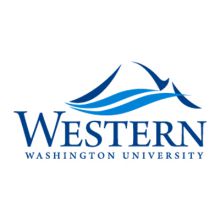The National Science Foundation is taking the US research community down the pathway of incorporating indigenous knowledges into mainstream scientific exploration, saying the combination could advance discoveries “in effective, ethical and novel ways”.
The NSF has announced plans to spend $30 million (£25 million) over five years on a new NSF Center for Braiding Indigenous Knowledges and Science, a project that aims to more directly include Native American understandings into research in areas that initially include climate change, food systems and cultural preservation.
Its overarching goals include amplifying the “plural coexistence of two very different knowledge systems”, said the director of the centre, Sonya Atalay, professor of anthropology at the University of Massachusetts Amherst, where the NSF centre will be based.
The US centre follows similar initiatives in other countries, including Canada and New Zealand, which have proven popular among their indigenous populations even as their advocates struggle to detail how the approach has delivered demonstrable gains in scientific knowledge.
Already, there have been some early warnings that the outcome in the US could be similar. Indigenous knowledge certainly has useful applications in many fields of human activity, said Jerry Coyne, emeritus professor of ecology and evolution at the University of Chicago, but it does not contribute in significant ways to the modern scientific processes that have produced decades of major breakthroughs in critical fields such as medicine, physics and chemistry.
“The idea that indigenous knowledge is really going to push science forward seems dubious to me,” Professor Coyne said.
In their announcement of the new NSF centre, its organisers cited the example of clam gardens – rock walls built along shorelines to provide a welcoming habitat for molluscs – which indigenous people have been creating for thousands of years along the Pacific north-west coast of the US and Canada. The approach can double or quadruple clam production, according to Marco Hatch, an associate professor of marine ecology at Western Washington University who studies their use and who will receive some of the first allotment of funding from the new NSF centre.
That kind of work does seem beneficial, Professor Coyne acknowledged. But as similar cases in New Zealand have shown, the actual scientific content is thin, he said. “My response is: show me the results, show me what useful science has come out of this – and there’s very little,” he said. “It’s always in the nature of, well, we’ve learned to pick berries when this phase of the moon occurs at this time of year. Yeah, that’s useful practical knowledge, but it’s not really science in the sense that the NSF considers science.”
An NSF official insisted on the scientific value of bringing new “backgrounds and attitudes” to research work. “Scientists don’t always create good or optimal research questions and designs because they are sometimes missing critical information about culture or other aspects of human behaviour or the environment,” the official said.
A potentially more valuable outcome of such federal investment, Professor Coyne said, would be for the government to help more indigenous students become professional scientists, who could then use their ancestral backgrounds in ways that fit more directly into existing research channels. “If you want to help underserved people, bring them into modern science,” he said.
The NSF’s announcement of the new centre does indicate plans in that direction, saying that some funding would be spent on training students at school level all the way up to postdoctoral researchers and graduate research assistants, many at minority-serving institutions.
Register to continue
Why register?
- Registration is free and only takes a moment
- Once registered, you can read 3 articles a month
- Sign up for our newsletter
Subscribe
Or subscribe for unlimited access to:
- Unlimited access to news, views, insights & reviews
- Digital editions
- Digital access to THE’s university and college rankings analysis
Already registered or a current subscriber? Login










